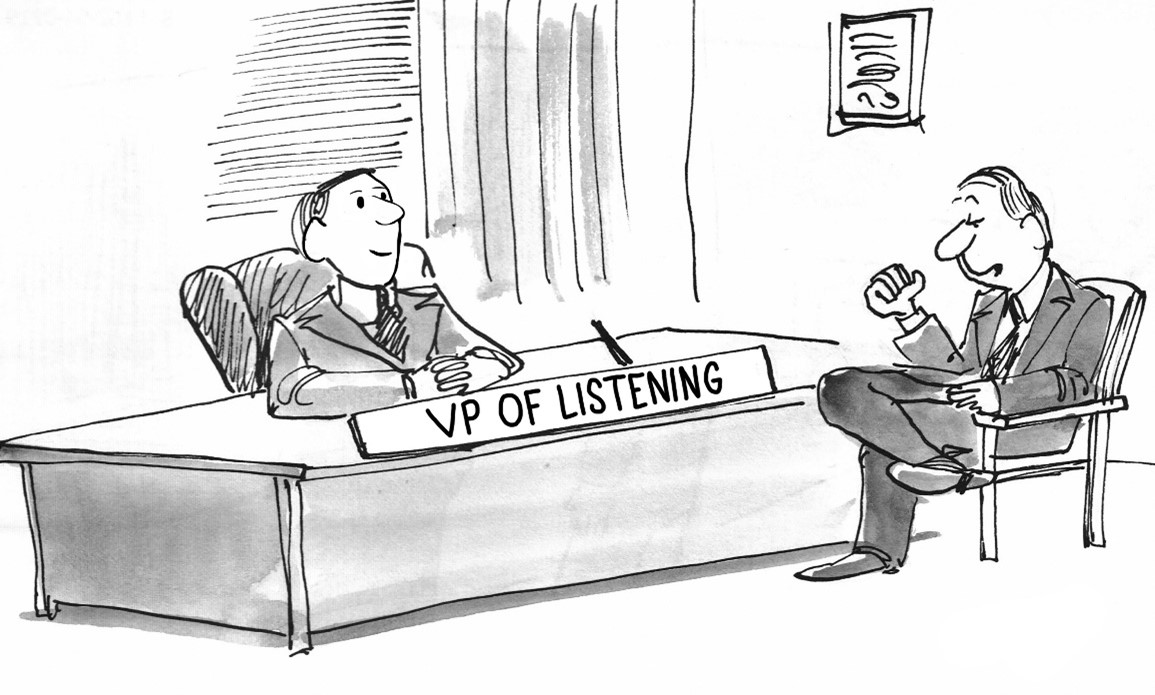
You are in the relationship business.
People see you for a result – but they stay with you because of the relationship.
There are many different definitions of relationship marketing – marketing isn’t codified like CPT®! (That is maybe a good thing!)
Last week I talked about direct response marketing and indirect or brand marketing. Relationship marketing stems from direct response. It emphasizes retention and patient and customer satisfaction.
Relationship marketing works. It helps with patient retention and patient referrals. It also helps generate referrals from external sources.
But what is it, and how do you improve it?
What is a Relationship?
A relationship is a connection that you have with another person. It is based, ultimately, on communication. Therefore, the quality of that communication determines the quality of the relationship.
Good communication, one that creates a good relationship, centers around understanding. As Stephen Covey advises, Seek first to understand, and then to get understood. Understanding is fundamental for good communication.
The relationship between you and your patient depends on results, of course. But to get results requires understanding the patient. Seeking to understand the patient – showing them a genuine interest in their condition and life – is not only needed from a clinical point of view, but it is vital for good communication and developing the relationship.

How to Improve Patient Communication
Patient Care can be an overused, even over-advertised term. But care is founded first on interest in and concern about the other person.
This means not just going through your script (yuck!) or your checklist with the patient, which may help keep you on track. It means do you understand them, or how and why they came to you? Are you interested?
But how do you do this after the 10,000th patient comes in to the office?
By being a real person who is interested. For example, a patient comes in and wears a green hat. You wonder about the green hat, so you ask them about it. “Hi. I can’t help but notice that you are wearing a green hat. It looks…stunning! Any special occasion?”
A checklist can help you communicate important information, but it can’t take the place of a real live person. It can’t make a relationship. You are not a robot, and neither is your patient.
Be appropriate and respectful, but mostly, be authentic.
This creates trust because your customer sees that you are interested in them as a unique person, not the 10,000th customer. And they see you as a real person, not just a busy professional trying to be interested but really faking it.
I am sure that you have experienced employees in other businesses trying to be interested in you but merely following a script. A bank teller asks me: “Have plans for the weekend?” I am nice back, but I know that she is just doing what her MBA executives in some office far away think she should say.
So, honest and interested communication, added with services and results, will create a strong relationship between you and your patient.
Outside of Your Practice
But relationship marketing goes beyond just your office.
Your patients know people. They can help you get to know their family, friends, and business associates.
You can create relationships with other professional practices, businesses, and organizations. I have seen many examples where a relationship was created between the doctor and an outside entity that resulted in many new patients.
Some examples:
- YMCA’s and commercial gyms whose owners and managers were also patients.
- Dentists who didn’t treat TMJ.
- MD’s who didn’t want to deal with patients with back pain.
- Ballet company that wanted to keep their dancers in shape.
- High school coaches who wanted to see their athletes do their best.
- Motels who needed a “house” medical doctor, dentist, and chiropractor.
- Autobody shops that took care of injured cars and sent injured passengers to the chiropractor.
- R. managers at companies who referred employees.
And this is vital: the relationship must be between you and another person associated with the outside entity. You are always dealing, first, with one person.
I have used this definition for years, and it still holds true:
A practice is a network of relationships
that is created and maintained through service and communication.
There are specific barriers to implementing relationship marketing, and you will run into them. I want to keep this article short, so I will refer you to my book below, which addresses the barriers and how to avoid them or bust through them.
But regardless, just communicating more with more interest will bring in more new patients and keep the ones you have longer.
Communicate more and with interest.
And…
Seize the Future (That is where your goals are!)
Ed
Link to the Goal Driven Business Book
Link to the Video Supplement to Relationship Marketing
